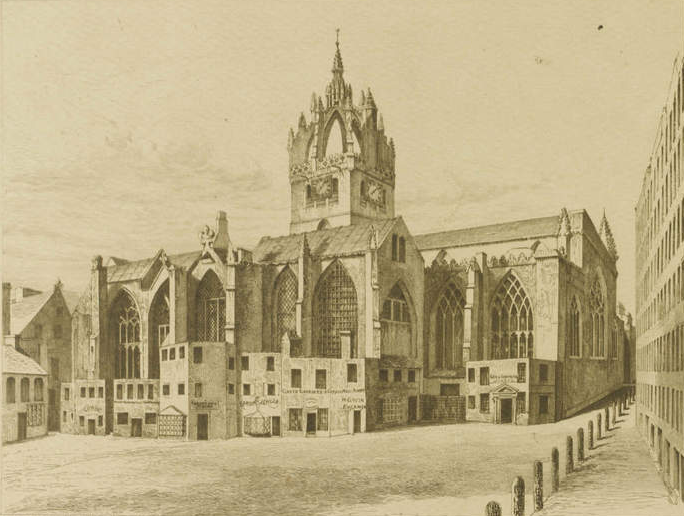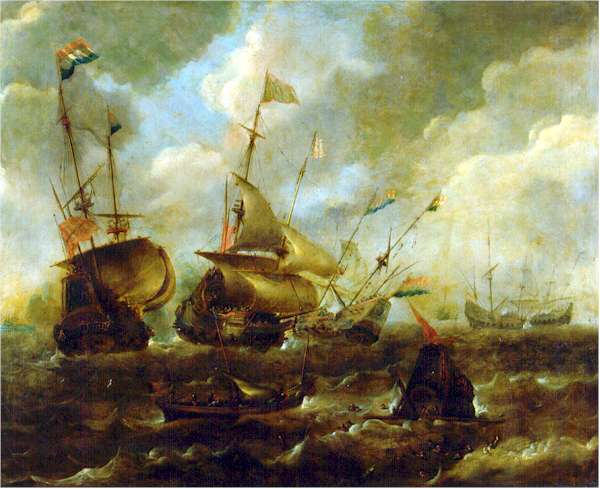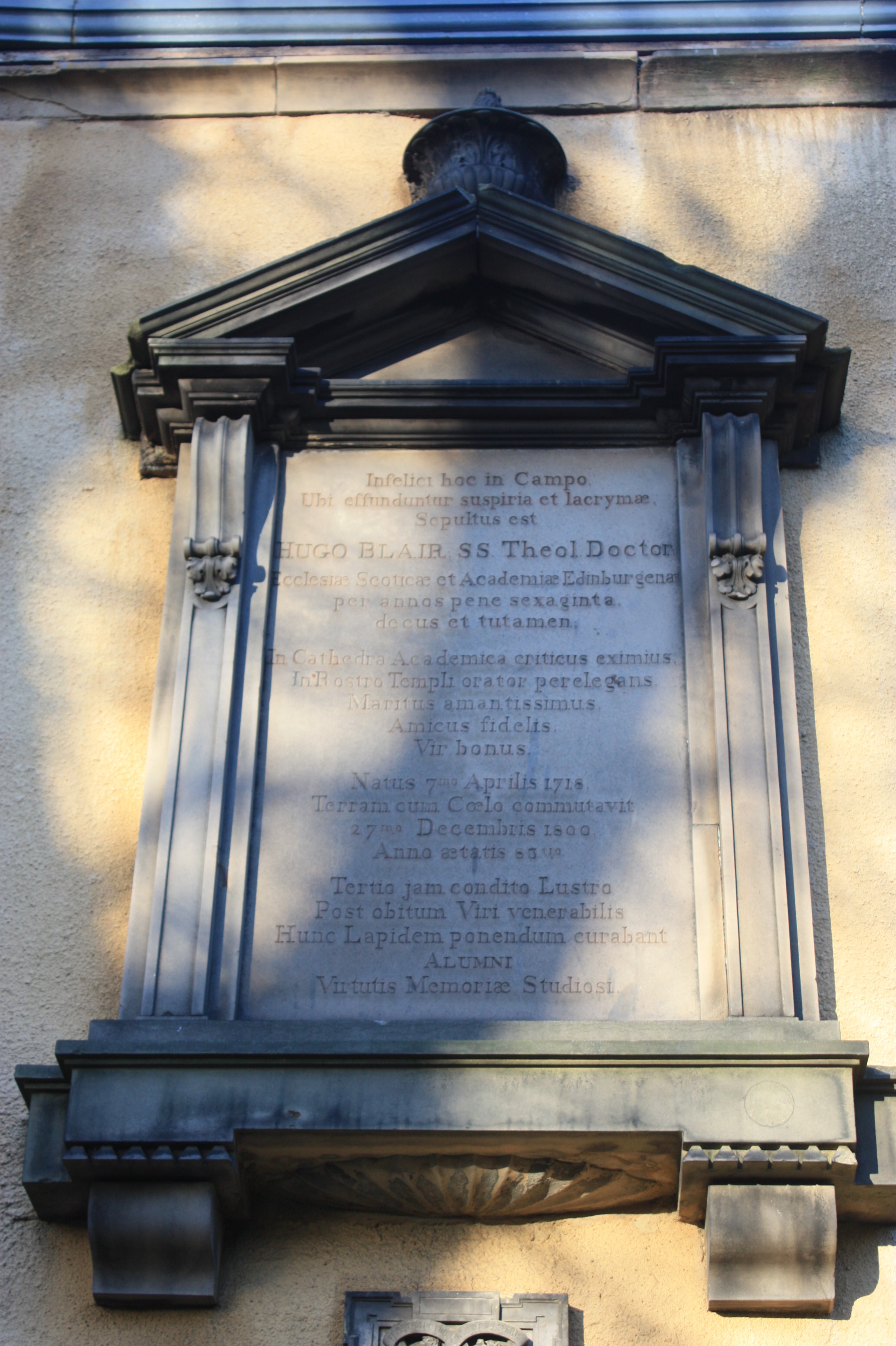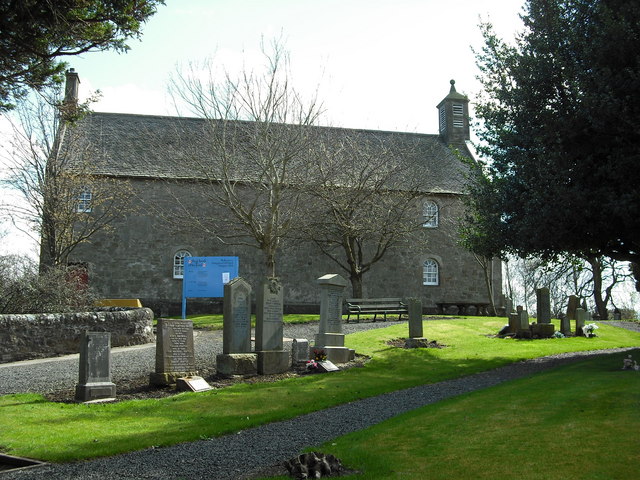|
David Blair (moderator)
David Blair (1637–1710) was a Scottish minister of the Church of Scotland who served as minister of St Giles Cathedral and was Moderator of the General Assembly in 1700 (the highest position within the Scottish church). Life He was born in the manse at St Andrews in 1637 the son of Rev Robert Blair and his second wife, Katherine Montgomerie of Braidstone, daughter of Viscount Montgomerie of Airds. He studied at St Andrews University and gained his MA in 1656.Fasti Ecclesiastae Scoticana by Hew Scott He emigrated to Holland and settled in Leyden, probably also studying further at Leyden University (famed for its religious instruction). In 1688 he moved to The Hague on the coast to take "second charge" within the Scots Church there. In 1689 he moved to the Scots Church in Rotterdam declining a position at the New Meeting House in Edinburgh in the same year. Following the Glorious Revolution he became Chaplain to the King of Great Britain (William III of Orange) on 1 August ... [...More Info...] [...Related Items...] OR: [Wikipedia] [Google] [Baidu] |
Church Of Scotland
The Church of Scotland ( sco, The Kirk o Scotland; gd, Eaglais na h-Alba) is the national church in Scotland. The Church of Scotland was principally shaped by John Knox, in the Scottish Reformation, Reformation of 1560, when it split from the Catholic Church and established itself as a church in the reformed tradition. The church is Calvinist Presbyterian, having no head of faith or leadership group and believing that God invited the church's adherents to worship Jesus. The annual meeting of its general assembly is chaired by the Moderator of the General Assembly of the Church of Scotland. The Church of Scotland celebrates two sacraments, Baptism and the Lord's Supper in Reformed theology, Lord's Supper, as well as five other Rite (Christianity), rites, such as Confirmation and Christian views on marriage, Matrimony. The church adheres to the Bible and the Westminster Confession of Faith, and is a member of the World Communion of Reformed Churches. History Presbyterian tra ... [...More Info...] [...Related Items...] OR: [Wikipedia] [Google] [Baidu] |
George Hamilton (moderator)
George Hamilton may refer to: Arts and entertainment * George Hamilton IV (1937–2014), American country music performer * George Hamilton (actor) (born 1939), American actor * George Hamilton (musician) (1901–1957), father of the actor George Hamilton * George Hamilton (Resident Evil), fictional character in the video games ''Resident Outbreak File #1 and File #2'' * George Heard Hamilton (1910–2004), professor of art history at Yale University * George Rostrevor Hamilton (1888–1967), English poet and critic Military * Sir George Hamilton, Comte Hamilton (est. 1635 – 1676), Irish soldier in French service * George Hamilton (soldier) (aft. 1658 – aft. 1728), Scottish soldier, Member of Parliament for Anstruther Burghs, and Jacobite * George FitzGeorge Hamilton (1898–1918), British Army officer Politics U.K. * Sir George Hamilton, 1st Baronet, of Donalong (c. 1607–1679), Irish baronet * George Hamilton, 3rd Earl of Abercorn (c. 1636 – bef. 1683), Scottish noblem ... [...More Info...] [...Related Items...] OR: [Wikipedia] [Google] [Baidu] |
People From St Andrews
A person ( : people) is a being that has certain capacities or attributes such as reason, morality, consciousness or self-consciousness, and being a part of a culturally established form of social relations such as kinship, ownership of property, or legal responsibility. The defining features of personhood and, consequently, what makes a person count as a person, differ widely among cultures and contexts. In addition to the question of personhood, of what makes a being count as a person to begin with, there are further questions about personal identity and self: both about what makes any particular person that particular person instead of another, and about what makes a person at one time the same person as they were or will be at another time despite any intervening changes. The plural form "people" is often used to refer to an entire nation or ethnic group (as in "a people"), and this was the original meaning of the word; it subsequently acquired its use as a plural form of per ... [...More Info...] [...Related Items...] OR: [Wikipedia] [Google] [Baidu] |
1710 Deaths
Year 171 ( CLXXI) was a common year starting on Monday (link will display the full calendar) of the Julian calendar. At the time, it was known as the Year of the Consulship of Severus and Herennianus (or, less frequently, year 924 ''Ab urbe condita''). The denomination 171 for this year has been used since the early medieval period, when the Anno Domini calendar era became the prevalent method in Europe for naming years. Events By place Roman Empire * Emperor Marcus Aurelius forms a new military command, the ''praetentura Italiae et Alpium''. Aquileia is relieved, and the Marcomanni are evicted from Roman territory. * Marcus Aurelius signs a peace treaty with the Quadi and the Sarmatian Iazyges. The Germanic tribes of the Hasdingi (Vandals) and the Lacringi become Roman allies. * Armenia and Mesopotamia become protectorates of the Roman Empire. * The Costoboci cross the Danube (Dacia) and ravage Thrace in the Balkan Peninsula. They reach Eleusis, near Athens, and de ... [...More Info...] [...Related Items...] OR: [Wikipedia] [Google] [Baidu] |
1637 Births
Events January–March * January 5 – Pierre Corneille's tragicomedy '' Le Cid'' is first performed, in Paris, France. * January 16 – The siege of Nagpur ends in what is now the Maharashtra state of India, as Kok Shah, the King of Deogarh, surrenders his kingdom to the Mughal Empire. * January 23 – John Maurice, Prince of Nassau-Siegen arrives from the Netherlands to become the Governor of Dutch Brazil, and extends the range of the colony over the next six years. * January 28 – The Manchu armies of China complete their invasion of northern Korea with the surrender of King Injo of the Joseon Kingdom. * February 3 – Tulip mania collapses in the Dutch Republic. * February 15 – Ferdinand III becomes Holy Roman Emperor upon the death of his father, Ferdinand II, although his formal coronation does not take place until later in the year. * February 18 – Eighty Years' War – Battle off Lizard Point: Off the coast of Cornwall, ... [...More Info...] [...Related Items...] OR: [Wikipedia] [Google] [Baidu] |
Hugh Blair
Hugh Blair FRSE (7 April 1718 – 27 December 1800) was a Scottish minister of religion, author and rhetorician, considered one of the first great theorists of written discourse. As a minister of the Church of Scotland, and occupant of the Chair of Rhetoric and Belles Lettres at the University of Edinburgh, Blair's teachings had a great impact in both the spiritual and the secular realms. Best known for ''Sermons'', a five volume endorsement of practical Christian morality, and ''Lectures on Rhetoric and Belles Lettres'', a prescriptive guide on composition (language), composition, Blair was a valuable part of the Scottish Enlightenment. Life Blair was born in Edinburgh into an educated Presbyterian family. His father was John Blair, an Edinburgh merchant. He was great-great-grandson of Rev. Robert Blair of St. Andrews and great nephew of Very Rev. David Blair (moderator), David Blair the Moderator of the General Assembly in 1700. From an early age it was clear that Blair, a ... [...More Info...] [...Related Items...] OR: [Wikipedia] [Google] [Baidu] |
Ormiston
Ormiston is a village in East Lothian, Scotland, near Tranent, Humbie, Pencaitland and Cranston, located on the north bank of the River Tyne at an elevation of about . The village was the first planned village in Scotland, founded in 1735 by John Cockburn (1685–1758), one of the initiators of the Agricultural Revolution. Name The word Ormiston is derived from a half mythical Anglian settler called ''Ormr'', meaning 'serpent' or 'snake'. 'Ormres' family had possession of the land during the 12th and 13th centuries. Ormiston or 'Ormistoun' is not an uncommon surname, and ''Ormr'' also survives in some English placenames such as Ormskirk and Ormesby. The latter part of the name, formerly spelt 'toun', is likely to descend from its Northumbrian Old English and later Scots meaning as 'farmstead' or 'farm and outbuildings' rather than the meaning 'town'. There was an "Ormiston" in Berwickshire, near Linton, where the legend of the Worm of Linton was related to land owne ... [...More Info...] [...Related Items...] OR: [Wikipedia] [Google] [Baidu] |
Livingston, West Lothian
Livingston ( sco, Leivinstoun, gd, Baile Dhunlèibhe) is the largest town in West Lothian, Scotland. Designated in 1962, it is the fourth post-war new town to be built in Scotland. Taking its name from a village of the same name incorporated into the new town, it was originally developed in the then-counties of Midlothian and West Lothian along the banks of the River Almond. It is situated approximately fifteen miles (25 km) west of Edinburgh and thirty miles (50 km) east of Glasgow, and is close to the towns of Broxburn to the north-east and Bathgate to the north-west. The town was built around a collection of small villages, Livingston Village, Bellsquarry, and Livingston Station (now part of Deans). The town has a number of residential areas. These include Craigshill, Howden, Ladywell, Knightsridge, Deans, Dedridge, Murieston, Almondvale, Eliburn, Kirkton, and Adambrae. There are several large industrial estates in Livingston, including Houston industrial esta ... [...More Info...] [...Related Items...] OR: [Wikipedia] [Google] [Baidu] |
Garvald, East Lothian
Garvald is a village south-east of Haddington, East Lothian, Haddington in East Lothian, Scotland. It lies on the Papana Water south of the B6370, east of Gifford, East Lothian, Gifford. The combined parish of Garvald and Bara, East Lothian, Bara, borders Whittingehame to the East, Morham to the North, Yester to the West, and Lauder to the South. It is mainly an agricultural parish. The red freestone once constantly mined in this parish was well known throughout the whole country. Etymology The name ''Garvald'' may be derived from the Scottish Gaelic ''Garbh Allt'', meaning "a rough burn or stream". A Common Brittonic, Brittonic origin is also possible, where the generic may be ''alt'', "a steep height or hill, a cliff" (Welsh language, Welsh ''allt''). The specifier may be either ''*garw'', "rough, harsh, rugged, uncultivated", or a derivative of ''*gār'', "a word" (perhaps adjectivally meaning "calling, crying, noisy"). Other like-named places in Southern Scotland may have the ... [...More Info...] [...Related Items...] OR: [Wikipedia] [Google] [Baidu] |
East Lothian
East Lothian (; sco, East Lowden; gd, Lodainn an Ear) is one of the 32 council areas of Scotland, as well as a historic county, registration county and lieutenancy area. The county was called Haddingtonshire until 1921. In 1975, the historic county was incorporated for local government purposes into Lothian Region as East Lothian District, with some slight alterations of its boundaries. The Local Government etc. (Scotland) Act 1994 later created East Lothian as one of 32 modern council areas. East Lothian lies south of the Firth of Forth in the eastern central Lowlands of Scotland. It borders Edinburgh to the west, Midlothian to the south-west and the Scottish Borders to the south. Its administrative centre and former county town is Haddington while the largest town is Musselburgh. Haddingtonshire has ancient origins and is named in a charter of 1139 as ''Hadintunschira'' and in another of 1141 as ''Hadintunshire''. Three of the county's towns were designated as roy ... [...More Info...] [...Related Items...] OR: [Wikipedia] [Google] [Baidu] |
Athelstaneford
Athelstaneford () is a village in East Lothian, Scotland. It lies almost 6 kilometres (3.5 mi) north-east of the market town of Haddington and about 28 kilometres (17 mi) east of Edinburgh. Battle of Athelstaneford According to popular legend, Athelstaneford is where the original Scottish saltire - the white diagonal cross on a sky blue background - was first adopted. On the eve of a battle between rival armies of Picts and Northumbrians in 832AD, Saint Andrew, who was crucified on a diagonal cross, came to the Pictish King Óengus II in a vision promising victory. The next morning the Picts saw a white cross formed by clouds in the sky. They won the battle and attributed their victory to the blessing of Saint Andrew, adopting his form of the cross as their flag, and naming him as their patron saint. The leader of the retreating Angles, a man called Athelstan, was said to have been slain at a nearby river crossing, hence the name Athelstaneford. However, there is co ... [...More Info...] [...Related Items...] OR: [Wikipedia] [Google] [Baidu] |
Carfin
Carfin (Scottish Gaelic: ''An Càrn Fionn'', meaning the White Cairn) is a village situated to the north-east of Motherwell, Scotland. Most local amenities are shared with the adjacent villages of Holytown, Newarthill and New Stevenston which have a combined population of around 20,000 across the four localities. Local facilities Carfin has strong Irish Catholic links, which are exemplified in Carfin Grotto a famous pilgrimage place, with extensive gardens and a visitors' centre with cafe. It was built in the early 1920s, when parish priest, Canon Thomas Nimmo Taylor engaged the unemployed miners of the village to build a shrine to Our Lady of Lourdes, allowing people in Scotland to venerate the Blessed Virgin without having to travel to France to do so. There are many places of worship in Carfin. A church hall is present and a small mosque for Muslims, which in 2006 was moved to a bigger mosque near Mossend, Bellshill. A community church met in the community centre but due to a ... [...More Info...] [...Related Items...] OR: [Wikipedia] [Google] [Baidu] |


_1938.jpg)





